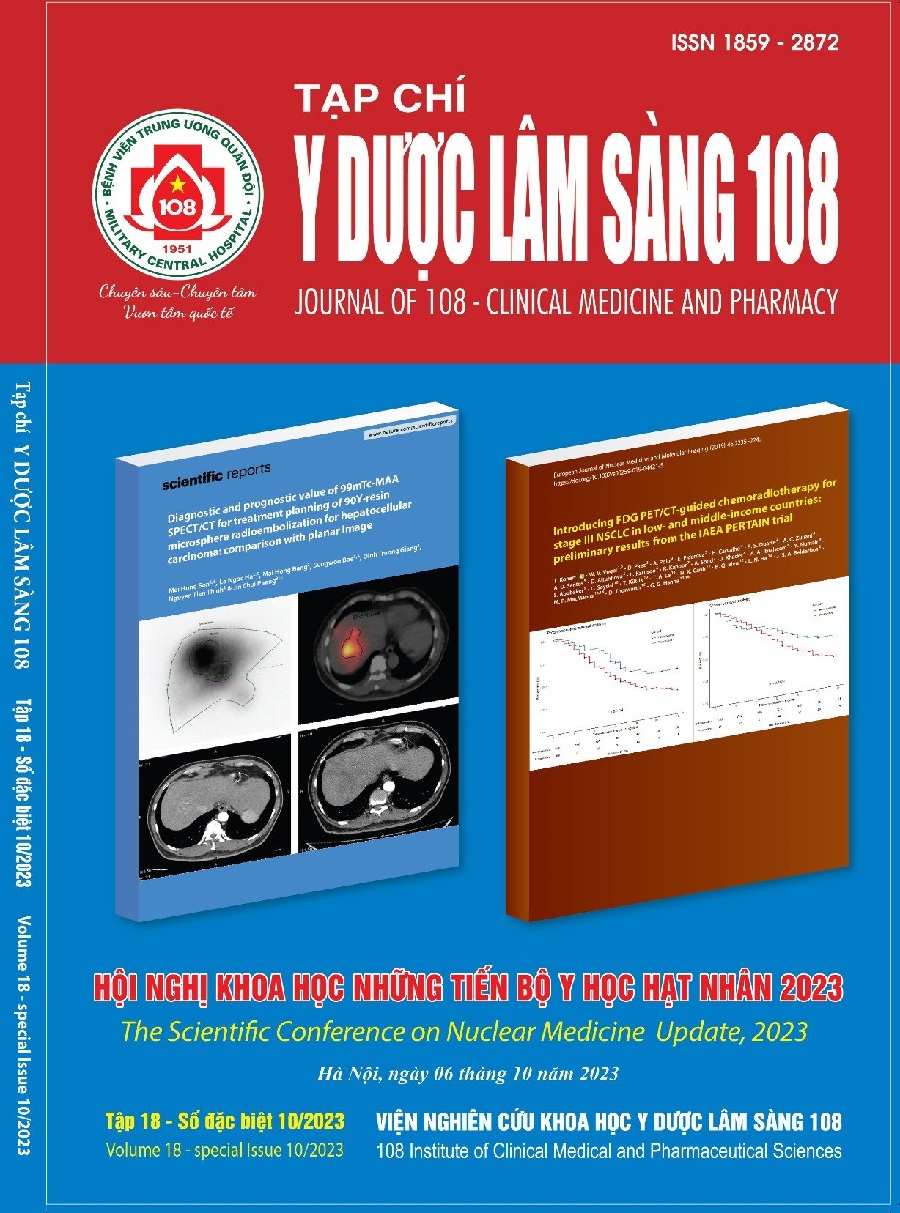Studies on the preparation of 131I-ANA conjugation and biodistribution in sarcoma-180 tumor bearing mice
Main Article Content
Keywords
Abstract
Objective: This report describes the radioiodination process of human antinuclear antibody (ANA) to prepare 131I-ANA radiopharmaceutical used to studies in diagnose and treat cancer. The ANAs are human autoimmune antibodies that are able to enter the nucleus and bind to substances found in the nucleus. The labeled antibody will localize in necrotic regions within tumors. Subject and method: Antinuclear antibodies were studied on the radiolabeling with iodine-131 using chloramine T methods by the labeling optimization was conducted such as reactant concentration, pH and time. 131I-ANA were tested for radiochemical purity and stability using paper electrophoresis. The biodistribution was evaluated in 30 tumor-bearing mice with sarcoma-180 cancer cell line. Result: The results show that the radiolabeling efficiency in the preparation of 131I-ANA was 95.51 ± 0.94% with 200mg ANA and the radioactive of 131I was 1.0mCi under the condition of pH 7.4 and 5-10 minutes at room temperature. The radiochemical purity reached 98% and stability for 16 days. The labeled compound was accumulated higher into the sarcoma tumor site after 24h injection and was maintained until 72h. Conclusion: The 131I-ANA was successfully prepared with high efficiency, long days stable and met the initial required criteria of radiopharmaceutical and which is an ideal radiopharmaceutical for potential use in studies in malignant cancer treatments.
Article Details
References
2. Juan IV, Marcos LH (2022) Disease criteria of systemic lupus erythematosus (SLE); the potential role of non-criteria autoantibodies. Journal of Translational Autoimmunity 5: 100143 https://doi.org/10.1016/j.jtauto.2022.100143.
3. Li H, Zheng Y, Chen L & Lin S (2022) High titers of antinuclear antibody and the presence of multiple autoantibodies are highly suggestive of systemic lupus erythematosus. Nature Scientific Reports 12: 1687. https://doi.org/10.1038/s41598-022-05807-6.
4. Dimitrov JD (2020) Harnessing therapeutic potential of “rogue” antibodies. Trends Pharmacol. Sci 41: 411–417 http://doi:10.1016/j.tips.2020.03.005.
5. Larson SM, Carrasquillo JA, Cheung NKV, Press O (2015) Radioimmunotherapy of human tumours. Nature Rev. Cancer 15: 347-360 http://doi:10.1038/nrc3925.
6. Thi-Thu N, Khanh-Giang N, Thi-Ngoc N et al (2021) Efficacy of nimotuzumab (hR3) conjugated with 131I or 90Y in laryngeal carcinoma xenograft mouse model. Intern J of Rad. Biol 97(5): 704-713 http://doi:10.1080/09553002.2021.1889703.
7. Mythili K, Grace S, Haladhar DS et al (2015) 131I-Nimotuzumab A potential radioimmunotherapeutic agent in treatment of tumors expressing EGFR. Appl Rad and Isotop 102: 98-102.
 ISSN: 1859 - 2872
ISSN: 1859 - 2872
